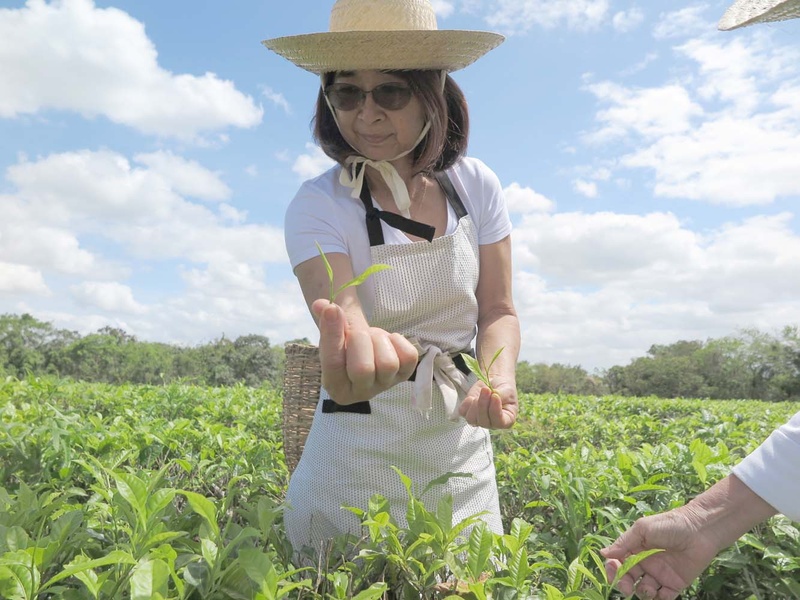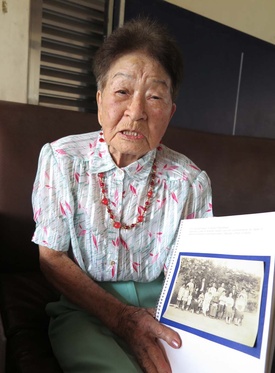"It looks just like the tea fields in Shizuoka." When I went to cover the tea fields in Registro, a coastal area about 190 kilometers southwest of São Paulo, I was reminded of the scenes back home.
However, it is black tea, not green tea. I heard that the raw tea leaves are the same for both green tea and black tea, but the processing process is different. That's why the tea fields are so similar.
Brazil has long been known as the "kingdom of coffee." However, it is little known that Japanese immigrants once established a "tea capital" there.
At its peak in the 1980s, there were as many as 42 tea factories in Registro alone. Domestic consumption of black tea was very low, and it was a completely export industry. Therefore, the exchange rate fluctuations in the 1990s caused the export competitiveness to drop sharply, and the industry suddenly declined.
Even after most of the farmers had stopped producing black tea, Ms. Ume Shimada (91 years old, second generation), who was born in Registro, continued to produce it on a small scale. Her father, Katsumi Sugano, was from Fukushima Prefecture and was one of the early immigrants who emigrated to the area aboard the Wakasa Maru in 1914 and settled in the coffee plantations of Riberão Preto.
Around that time, the Katsura Colony, Brazil's first permanent settlement for Japanese immigrants, was established in the region in 1913, followed by the Registro Colony in 1916.
Immigrant who died while enjoying cherry blossom viewing in his hometown
According to the Portuguese document "Nossas Raízes (Our Roots)," which records family history, Umeko's father settled in Registro in 1918, making him one of the pioneers. Umeko was born there as the youngest of six siblings. She is truly a native of Registro. When her father was alive, the tea fields were much larger than they are now, and there was a tea factory here as well.
In 2011, the business of Amaya Tea Factory, which was a supplier, started to deteriorate and they refused to supply to us anymore. Ume-san recalls, "I hugged the tea fields and cried." "It was sad to see the tea fields overgrown with weeds. I kept thinking about how I could revive them, and eventually I decided to start selling them myself."
Just then, he happened to meet Tomio Makiuchi, a tea lover and postwar immigrant engineer with extensive knowledge of tea-making machinery, on the street. Pointing out a broken rolling machine (a device that rolls the leaves to promote fermentation) that was for sale at a second-hand machinery store, Makiuchi recommended, "I'll fix it, so why don't you buy it? Then you can start a tea factory." And he actually restored the machine.
So in November 2014, Shimada set up a small tea factory and started selling a new brand of tea called "Obaachan." At the time, the Nikkei Shimbun wrote an article about it, albeit modestly, and then NHK and Brazilian media also reported on it, and the brand gradually became more well-known. While machine-picking is common, carefully hand-picked black tea is rare, so "Obaachan" is becoming well-known.
On October 20th, I heard Ume talk about her father for the first time.
"My father came to Brazil in 1915, thinking that he would return to Japan with some money in five or ten years. But he never saved up as much money as he had hoped. He always wanted to go back to Japan and kept saying, 'I'm going to spend the rest of my life in Japan,' so as someone born in Brazil, I was always angry."
The tail of a person's soul is trapped in the place where they are born. The first generation stay in their home country, the second generation stay in the place where they immigrate. This difference is difficult to bridge even with the passage of time.
"My father was finally able to visit Japan in 1958, after 43 years since the end of the war. My mother, who had come with him, returned to Brazil first, saying she would stay behind after enjoying the cherry blossom viewing. In fact, he did go to the cherry blossom viewing, suffered a stroke under a cherry tree, and was taken to my mother's parents' house by a stranger. He passed away 11 days later."
He was buried in his hometown on April 28, 1958, as he had wished.
Usually, the word "nostalgia" is associated with a bittersweet nostalgic feeling. But for immigrants who have been forcibly separated from their homelands for decades, "nostalgia" is an unbearable mental illness.
Dying under the cherry blossoms. For the Japanese of today, that may not be a happy way to die. But it must have been what he wanted. Listening to Shimada's story, I was moved by the way ordinary people, the "Meiji Japanese," lived their lives.
Umeko's determination to continue working in the tea fields even at the cost of clinging to rocks gives us the sense of the "Meiji Japanese" she inherited from her father.
© 2018 Masayuki Fukasawa








